With the growing demand for high-performing residential spaces, architects are challenged with initiating creative ideas for our ever-changing lifestyles. New trends have brought out some unique perspectives, tips and tricks from architects who are successfully responding to the active social lifestyles of today's homeowners.
Below are a few trends in residential design, with inspiring ideas for maximizing your floorplan.
Today's homeowners don't want their storage to be seen by guests when they are entertaining. Hidden, functional storage can be challenging to design for, but with a little creativity, strategy and foresight, architects can create the space homeowners need in a way that complements their homes' design.
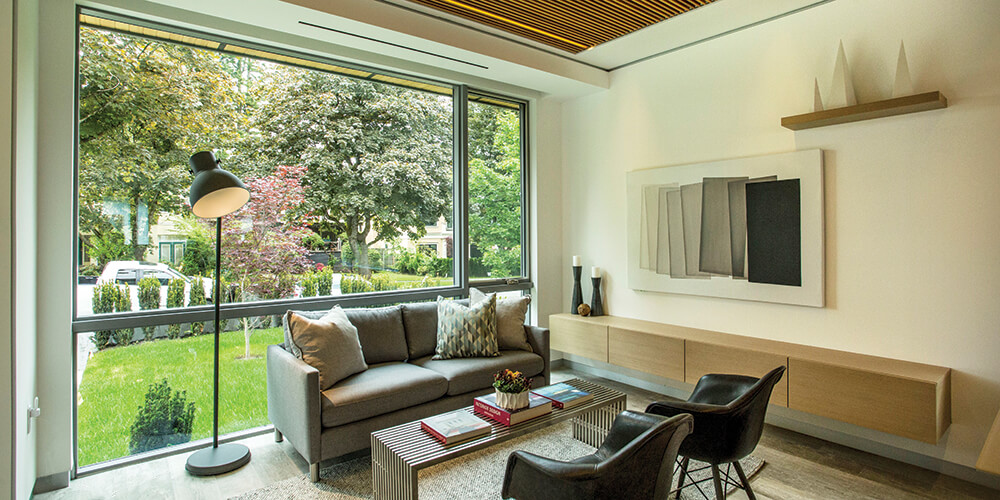
Storage as sculpture: a floating shelf or bookcase hides storage items from view. [Source]
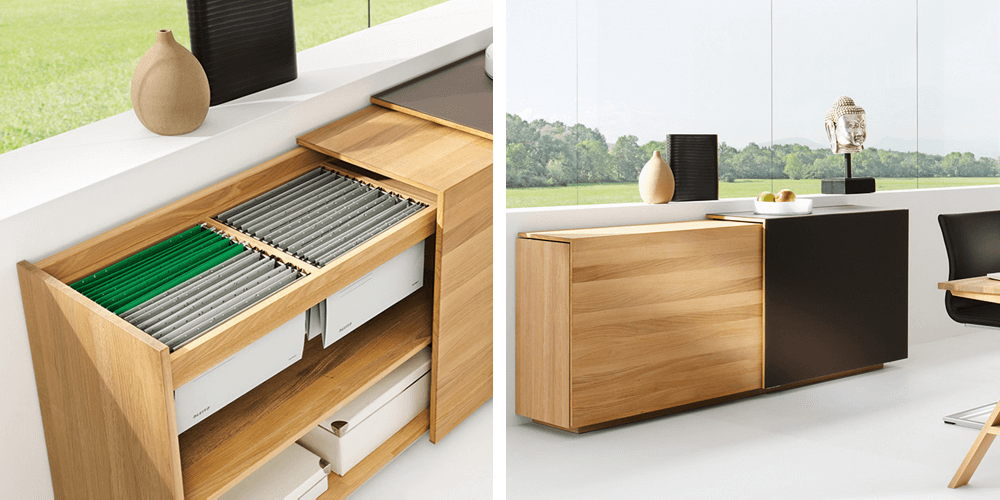
Storage behind sliding walls or cabinets can be stowed away out of sight. [Source]
When a minimal aesthetic is desired, storage space can be designed as part of the décor, almost as a piece of furniture or art. Illinois architect Mark Benner states, "You want a pristine, clean appearance of almost everything in a contemporary home. And a lot of that is about getting things to disappear in unique ways and using it as an opportunity to turn those storage facilities into a sculptural addition."
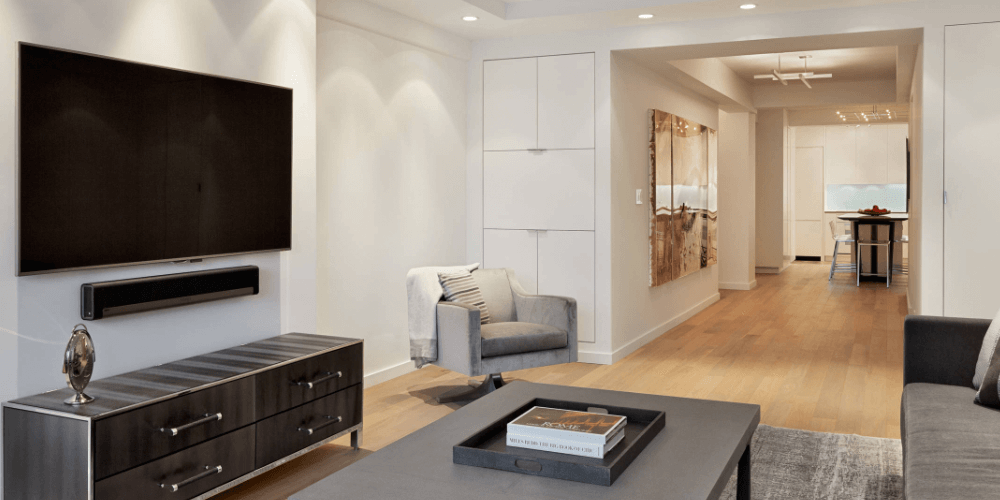
Cupboard and compartment surfaces are flush with a monochromatic wall. [Source]
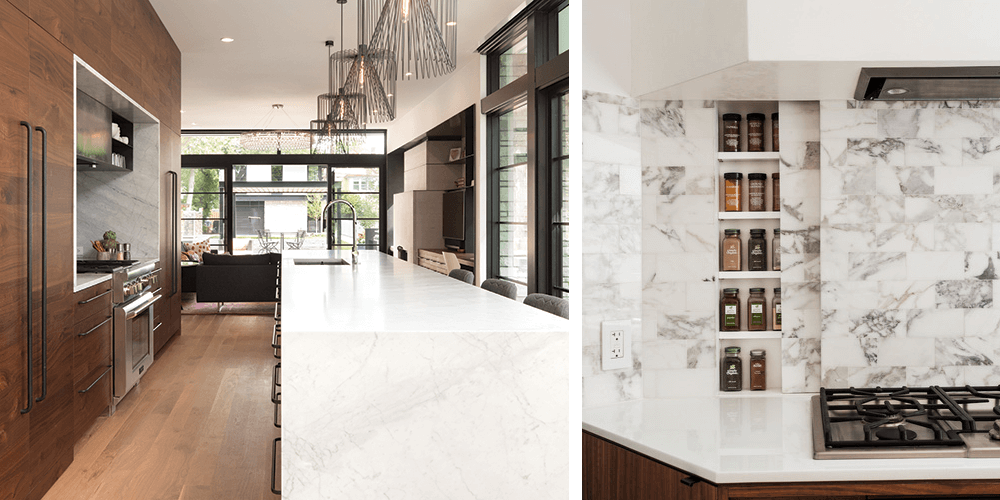
Natural textures camouflage kitchen storage and appliances. [Source 1] Recessed areas keep necessities within sight and reach, but meticulously organized. [Source 2]
Hidden drawers, cabinets, closets and other spaces can be incorporated into the design, especially for homes with limited square footage. Storage spaces that are flush with the wall, textured, or patterned tend to camouflage the compartments, so cupboards, closets, refrigerators and pantries recede into the room almost unnoticed.
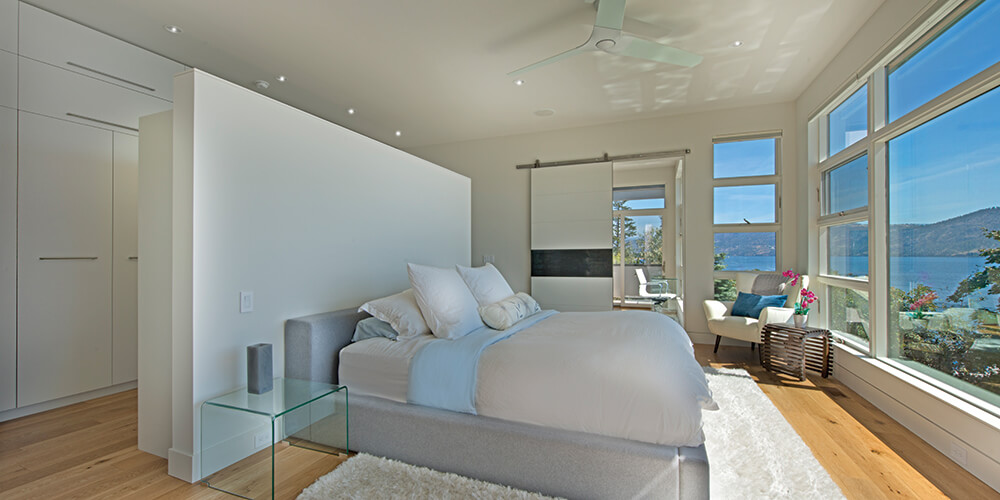
Dividing walls can block the view of closets or storage areas, yet allow easy access behind them. [Source]
The line between kitchen and formal dining room continues to blur as the trend of mealtimes shifting to the kitchen counter increases. Large, expansive countertops are serving double-duty as food prep and dinnertime destinations and can easily transition from functional to formal just by changing the seating and lighting.
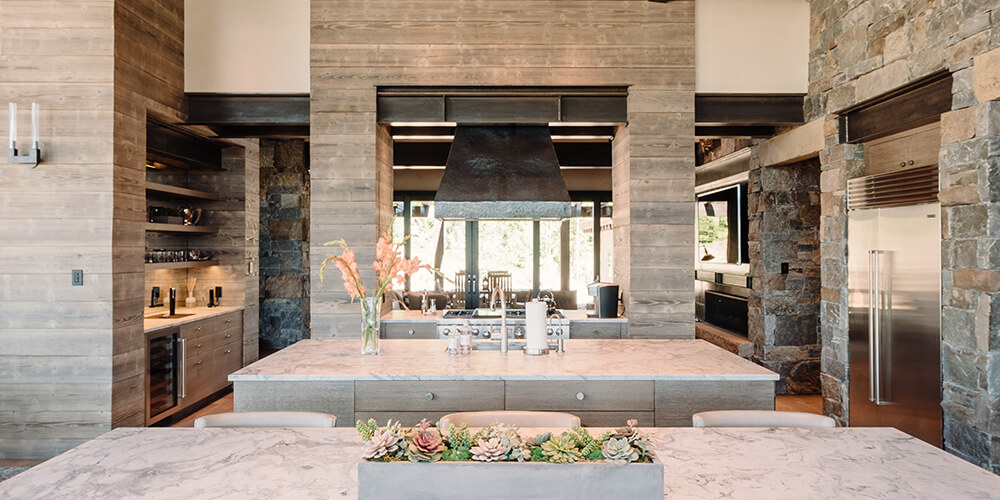
A textured marble countertop provides a generous surface for food prep and dining. [Source]
Michigan architect, Damian Farrell, recommends using 30-inch deep countertops whenever you can. "Even if it means using a standard 24-inch base cabinet and losing the six inches behind it. Our clients quickly realize the benefit of that extra six inches of counter depth. It lets you put your coffee maker and toaster on the counter and still have a decent amount of workspace in front of you."
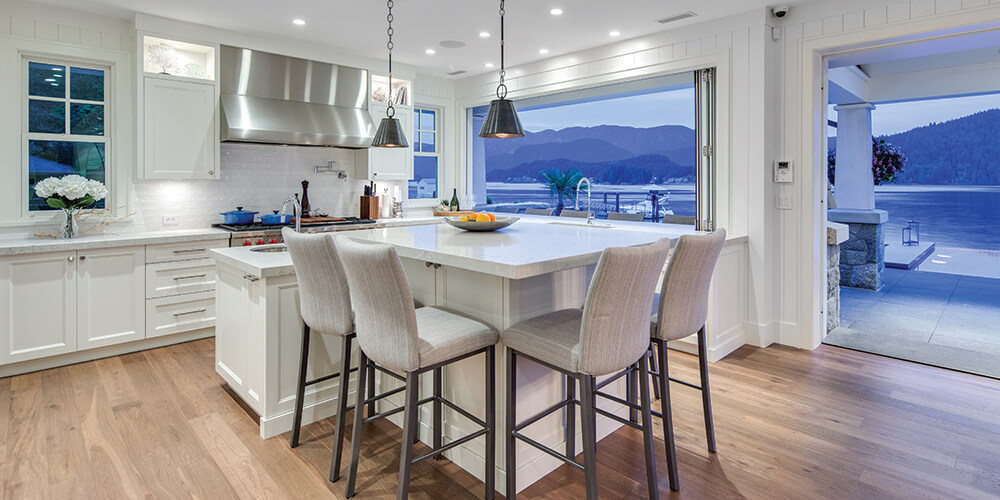
Standalone kitchen islands add storage, style, and seating when preparing meals or snacks. [Source]
Larger, or additional strategically placed countertops can also prove to be ideal for those who enjoy eating outdoors. Guests can casually dine on the patio while food and beverages are passed between folding or sliding windows. The convenience of this pass-through entertainment area can enhance a party both indoors and out, allowing easy interaction between spaces, and a connection with the guests at all times.
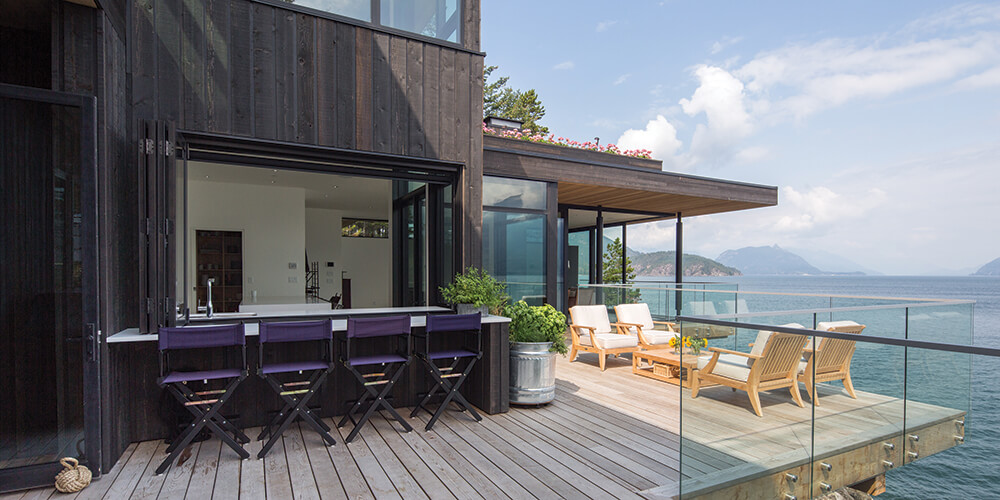
Folding windows offer pass-through service with casual outdoor seating. [Source]
Additionally, with the transformation in outdoor dining considerations, culinary preparation areas continue to evolve as well. Outdoor kitchens and dining rooms are becoming increasingly popular. According to the American Society of Landscape Architects (ASLA), outdoor seating and dining areas are one of the top three most popular outdoor elements requested by clients.
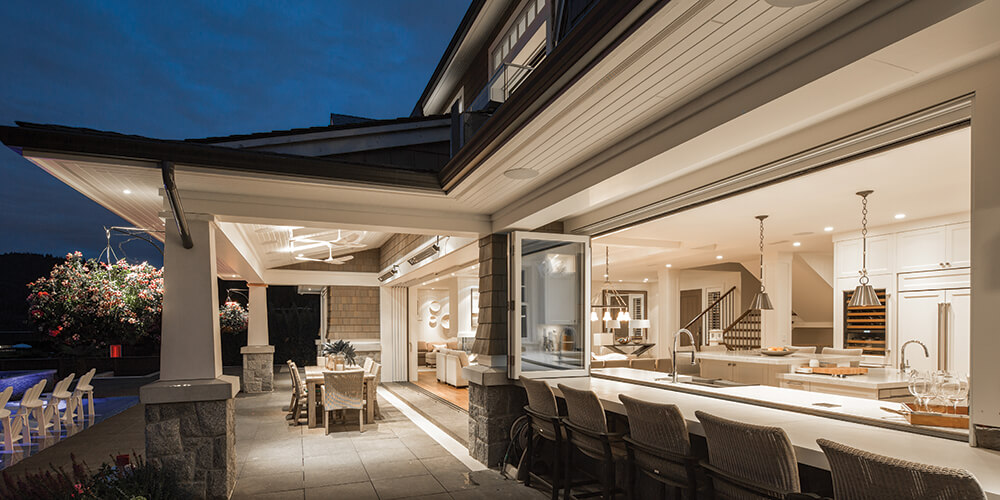
Folding windows and TerraSpan® lift & slide doors allow convenient access to outdoor dining areas. [Source]
"Today's homeowners are maximizing their space in every way possible," notes architect Anderson Roderick of SARCO Architects, "We're asked to create the availability of entertainment and relaxation in multiple areas of the home, including exterior spaces like rooftops or terraces."
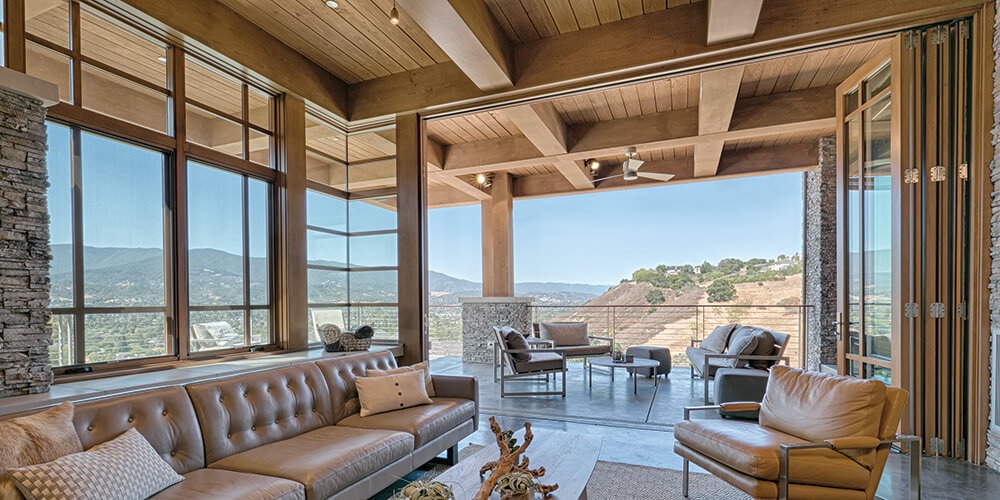
Custom-crafted wood folding doors embrace breathtaking views of the landscape. [Source]
The challenge then lies in not only identifying the multiple uses of these individual spaces, but also in consideration of the flow that you want to achieve between them. Incorporating expansive openings into your design will create a seamless transition between environments while expanding the living space. Sliding patio doors and folding doors can provide convenient passage to an outdoor kitchen, additional seating or dining areas.
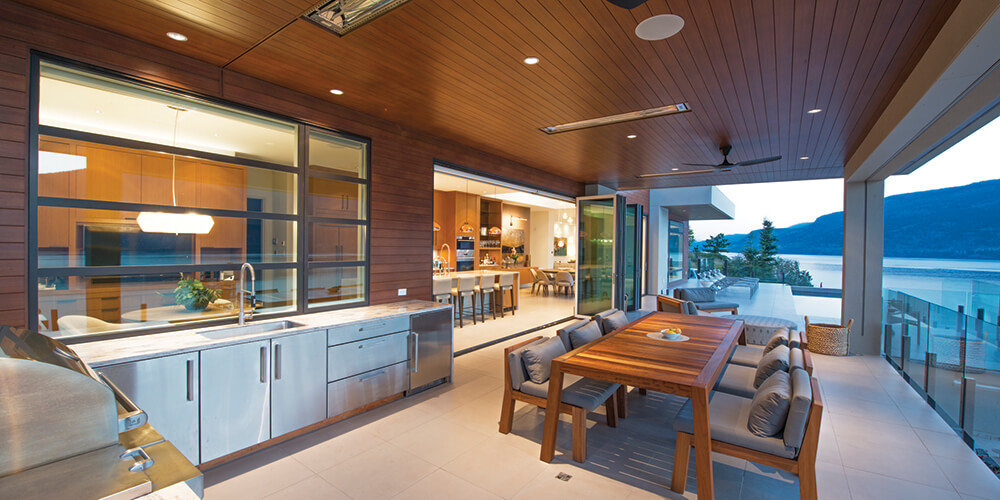
Folding doors open up the living space to an outdoor kitchen and dining area with additional seating for guests. [Source]
For maximum blurring of boundaries, oversized sliding doors positioned in a corner configuration can form massive walls of glass that open up two sides of the home. Doors of this size can be equipped with automation so you can easily open and close them with the flip of a switch or the touch of a button.
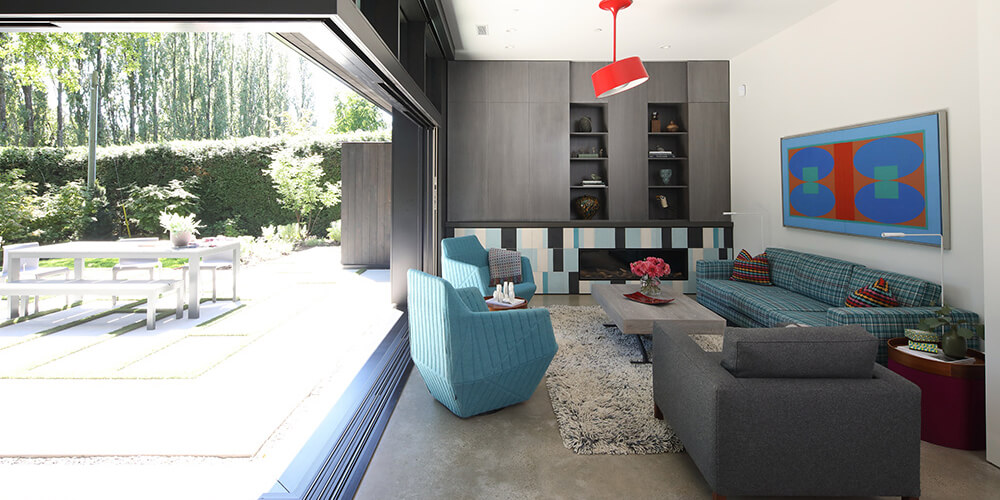
A corner sliding door unit draws the outdoors into the home. [Source]
Regardless of the climate, there are infinite custom solutions for meeting both aesthetic and functional design needs when it comes to creating warm, light-filled spaces for all seasons.
Large expanses of glass make a home feel lighter, warmer and more spacious. Maryland architect Peter Twohy finds creative ways to use natural light and windows to add interest and drama to interior spaces. "Windows in corners are a great way to open spaces up that lighting can’t always do. Let’s say there are four windows, two on one wall and two immediately adjacent on the next. That always feels bigger, more expansive, than those four exact windows all on the same wall."
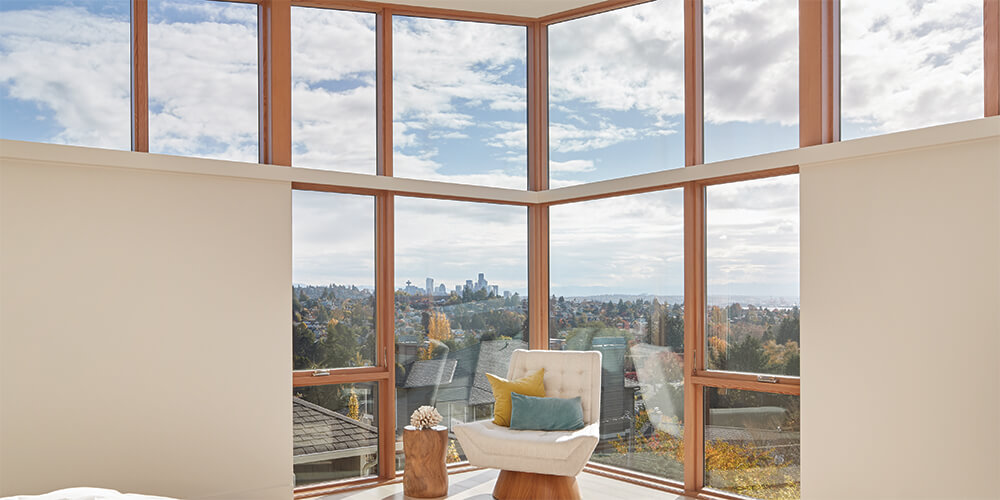
Configurations of multiple direct set windows and casements on adjacent walls create light-filled spaces with ample views and ventilation. [Source]
Some design and décor trends that complement the architecture are the use of natural materials and textures. Neutral palettes add warmth and softness to modern design, contrasting with the steel, concrete and glass. Materials from the exterior of the home are used inside as well, for a blending of natural elements and textures.
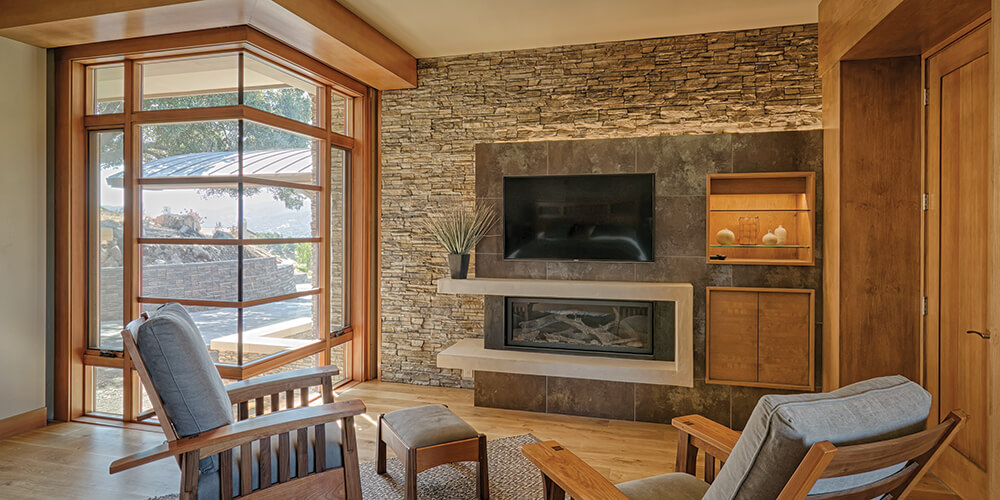
An inverted corner direct set window unit complements a natural material palette. [Source]
"We've used some very interesting bark siding material [indoors]. It's really dynamic and people want to touch it, it's so interesting," says Benner. "That's a great product you can use both indoors and outdoors to blur the line of where one ends and the other begins."
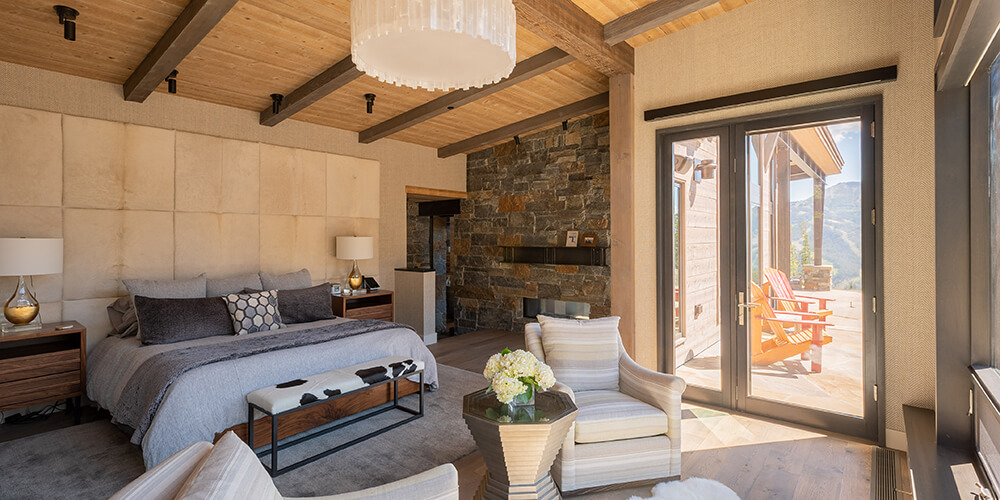
Interior spaces of this home feature natural materials, colors and textures found in the surrounding landscape. [Source]
With a little bit of creativity, strategy and well-chosen products, it's possible to accommodate any trend in your client's design, no matter the style or space available. Whether it's cleverly disguising storage, using traditionally outdoor materials on interior walls, or extending the living room to the poolside deck, your highly creative and functional design is sure to impress.
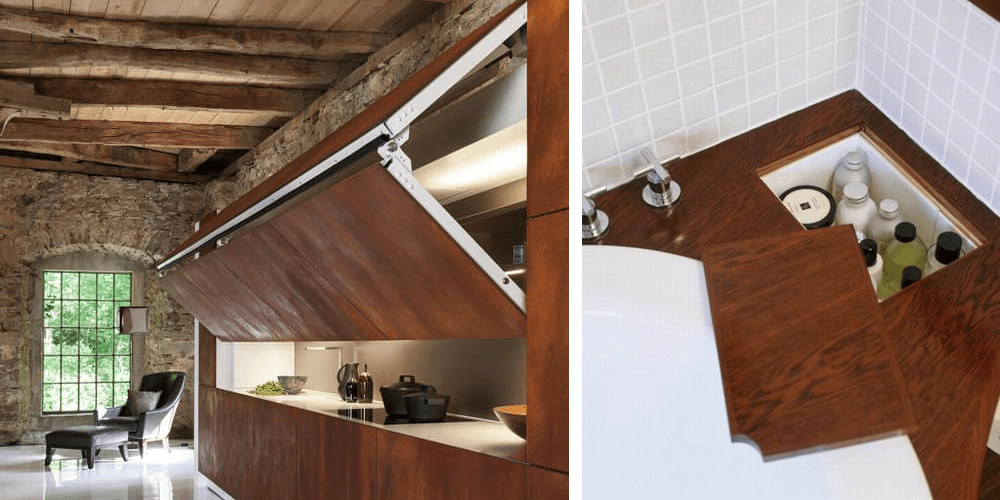
A fold-up wall completely hides the service area in the kitchen. [Source1] A removable panel hides toiletries. [Source 2]
Kolbe has options and custom solutions for satisfying the trends of today, but our artisan roots appreciate and welcome the design challenges of tomorrow. Explore our full product offering to find out why – We’re for the visionaries.®